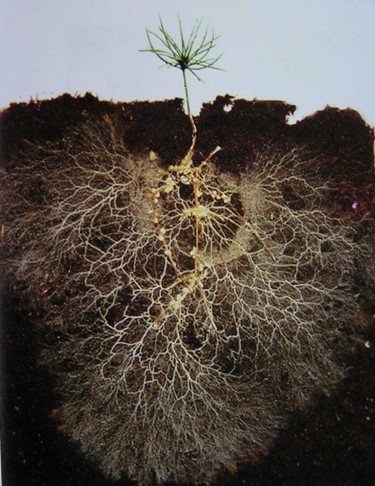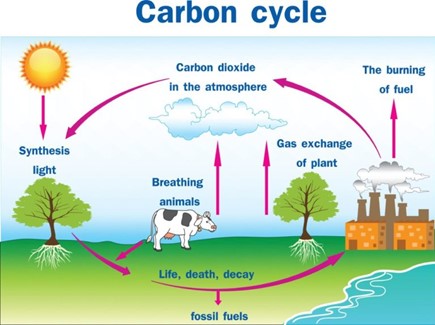BEAM (Bionoc Fungal Enrichment) plus adaptive grazing can sequester carbon (up to 20 tons per hectare per year in the soil)
Research by Dr. Johnson, and the long term experience of farmers such as Gabe Brown in North Dakota, have shown that in addition to a high fungal to bacterial ratio in the soil, the addition of intensive, rotational grazing by herbivores (cows, sheep), and their biologically rich manure, accelerates the process of carbon sequestration in the soil. They call this process “soil regeneration” and have started an entire movement in the agricultural communities of the world. This process mimics the natural process that took place historically when vast herds of bison grazed the great plains and created the thick rich topsoil the pioneers found when they settled the area in centuries past.

BEAM’s 400-500 species of fungi and over 2700 species of bacteria offer plants the greatest chance of symbiosis and cooperation between plant roots and microbes
Plants and their root systems have an integral cooperation with the living microbes in healthy soil. Plants harvest energy from the sun, manufacture liquid carbon compounds, and send this down to the roots where it ‘exudes’ or leaks out into the soil. Fungus and bacteria in the soil (if they are present and have not been destroyed by tillage, poisoned by herbicides, or starved from lack of plants to feed them), feed on the liquid carbon exudates (which they cannot make), and in turn provide elemental essential minerals to the plant, which only the fungi can extract from the rocks in the soil.
BEAM, a highly diverse, fungal-dominant biological inoculant, re-introduces millions of microbes back into the soils, many of which have been abused and exhausted by decades of tillage, herbicides, pesticides and strong fertilizers, which inhibit the association between fungi and plant roots. In a very real sense, many of the essential varieties of microbes have become extinct in these abused soils. BEAM corrects this problem.

BEAM (Bionocplays a critical role in restoring essential microbes to the Cycle
Crop yields were also dramatically improved. Johnson reports that the cotton he used in his testing grew 6 feet high, and produced over five bales of cotton per acre, without fertilizers, herbicides or insecticides. The average cotton yield in the area is about two and a half bales per acre. Australian farmers using similar methods have seen yields of 3 tons of wheat in areas that produced about 1.6 tons previously.

BEAM’s use in cotton crops can double yields and reduce the need for fertilizers